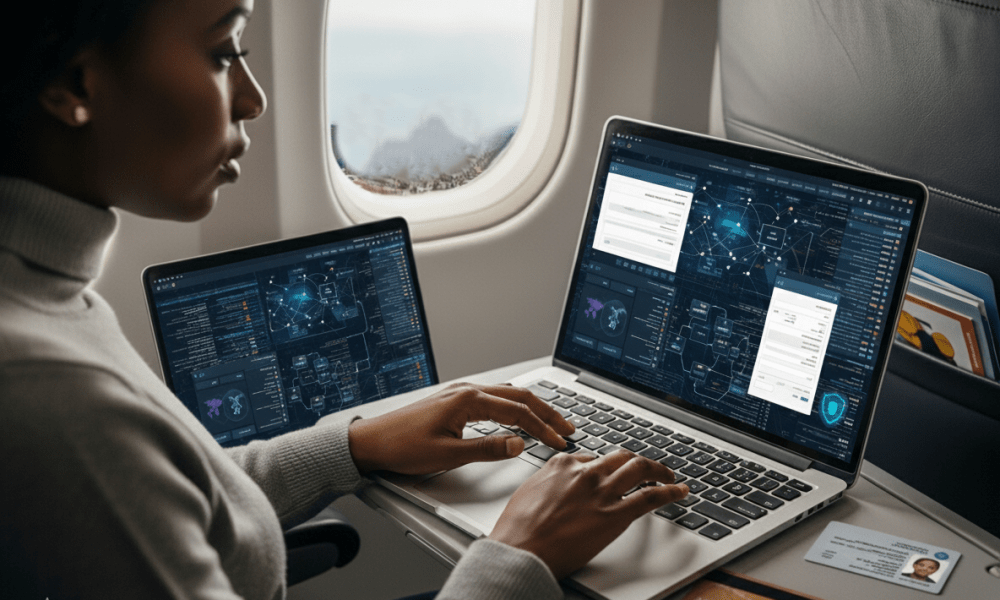AI in Travel
Agoda boosts traveller confidence with AI-driven image upgrade

Agoda has implemented a new Content Enhancement Tool that uses Machine Learning and AI to improve the quality of images on its travel platform.
The tool is designed to provide travellers with clearer, higher-quality images when searching for hotels and holiday properties, with an aim to give prospective guests a more accurate representation of where they might stay. The update affects the presentation of images across a range of listings, from boutique city hotels to beachfront villas, and is intended to help customers make more confident booking decisions.
Image clarity
Agoda hosts over 6 million accommodation options on its platform, supported by more than 450 million property images. With such a large quantity of visual content, the challenge has been to ensure both the relevance and quality of the images presented to users.
The Content Enhancement Tool leverages Machine Learning and AI to process these images automatically. The technology is able to identify lower-resolution photos, enhance their clarity, remove duplicates, improve image tagging, and rank images based on relevance and sharpness. This process is conducted with a focus on maintaining the authenticity of each photo, so that properties are accurately represented to potential guests.
Idan Zalzberg, Chief Technology Officer at Agoda, highlighted the motivation behind the development and deployment of the new tool. Zalzberg emphasised the importance of imagery in fostering confidence among users making travel bookings.
“A good picture can say more than a thousand words. Photos are essential to building trust when booking travel. With millions of images from different sources, we built a smart tool to classify, rank, and deliver the most relevant visuals, fast and at scale. This gives travelers a clearer, more informative, and true-to-life view of where they might stay, helping them book with confidence.”
Early results
Since the introduction of the Content Enhancement Tool, Agoda has observed several trends among travellers interacting with upgraded listings. According to Agoda, users are now spending more time browsing accommodation galleries, viewing more photos, and are more likely to investigate room details after seeing clearer images. These patterns suggest that visual content plays a significant role in how travellers engage with booking platforms.
Zalzberg added, “This is about giving users additional confidence. When you know what to expect, you book with more peace of mind and less hesitation.” The enhanced visuals are positioned as a means not only to inform users but also to reduce uncertainty and hesitation during the booking process.
Wider offerings
Alongside enhancing property images, Agoda continues to offer a broad array of travel options through its online platform. This includes access to over 6 million holiday properties, more than 130,000 flight routes, and 300,000 activities. The platform’s goal is to present comprehensive travel solutions while improving user confidence through better information and visuals. Users can access these services through Agoda’s website or mobile application.
The company remains headquartered in Singapore and operates in numerous markets globally, with ongoing efforts to refine its digital offering through new technologies such as the Content Enhancement Tool. The platform supports its users in multiple languages and maintains a focus on both usability and accuracy in its listings.
AI in Travel
Travel Recovery and AI Strategy Divergences

It involves the strategic direction and implementation of AI and content integration, which are crucial for user experience and platform competitiveness.
How will the AI and content strategy operate over the next few years? Can you describe the recent Trip.Planner upgrade? – Alex C. Yao (JPMorgan Chase & Co, Research Division)
2025Q2: The integration of AI and content creates powerful synergies across our platform. AI enhances content by delivering personalized intelligent recommendations, while a rich content ecosystem strengthens our AI models. – Jianzhang Liang(CEO)
How do AI initiatives like Trip.Best and TripTrends affect business outcomes? – Jiong Shao (Barclays Bank PLC, Research Division)
2024Q2: We have integrated AI tools on our platforms like Trip.Best, TripTrends, and TripGenie to enhance user experience and operational efficiency, demonstrating the versatility and potential of AI in various scenarios. – James Liang(CEO)
AI in Travel
Travel trust gap widens as AI fraud fears grow – Gadget

Nearly half of global consumers (44%) lack confidence in the travel industry’s ability to protect them from AI-powered fraud including identity theft and account takeover fraud.
This is revealed in the 2025 Online Identity Study by Jumio, a provider of AI-powered identity intelligence anchored in biometric authentication, automation and data-driven insights. The study surveyed 8,001 adults in the United States, United Kingdom, Singapore, and Mexico between 9 and 24 April 2025.
For the sharing economy (including vacation rentals and other travel-focused gig economy services), confidence falls even further, with 55% in the UK and 50% globally saying they don’t feel adequately protected.
Consumers share sensitive personal data for a simple vacation, often providing government-issued IDs such as passports or drivers’ licences to book flights, check into hotels, and rent cars. This exchange of data makes consumers vulnerable to fraud during the summer travel season, and they recognise the risk.
These sentiments trend alongside broader global distrust in digital spaces, with 69% of respondents saying AI-powered fraud now poses a greater threat to personal security than traditional forms of identity theft.
In response to this distrust, consumers worldwide are slightly more willing to invest more time in identity verification on these platforms than in 2024:
- In 2025, 74% of global consumers said they would willingly spend more time on identity verification when accessing travel and hospitality-related platforms if it improved their security, up from 71% in 2024.
- Global willingness to spend time verifying identity on sharing economy platforms also stayed high at 70% in 2025, only slightly down from 71% in 2024, but with a subtle shift from “a lot more time” to “a little more time”. This suggests increased caution, with a remaining preference for low-friction, visible safeguards.
Consumers’ increasing willingness to spend time on identity verification for travel-related transactions follows a growing trend in traditionally higher-risk industries. For instance, 80% of consumers globally were willing to spend more time on security for digital platforms supporting banking and financial services.
“Whether it’s an evacuation plan or a safe in every hotel room, the travel and hospitality industry know how to build the structures and processes customers need to feel safe,” says Bala Kumar, chief product and technology officer at Jumio.
“Now customers expect the same level of care for their personal data. But travel and hospitality businesses can’t keep layering traditional protections on already complex processes – they need new solutions and technologies to balance convenience with protection, even as AI-powered scams evolve.”
* Read the 2025 Jumio Online Identity Study here.
AI in Travel
A Strategic Catalyst for Long-Term Growth

The travel industry is undergoing a seismic shift, driven by two powerful forces: the rise of artificial intelligence (AI) and the explosive growth of China’s inbound tourism sector. At the forefront of this transformation is Trip.com Group (TCOM), a company that has not only embraced AI as a core strategic pillar but has also positioned itself to capitalize on the surging demand for international travel to China. For investors, this is a rare confluence of technological innovation and macroeconomic tailwinds that could redefine the online travel agency (OTA) landscape for years to come.
AI as the Engine of Personalization and Efficiency
Trip.com’s AI-driven ecosystem is no longer a buzzword—it’s a proven revenue driver. The company’s TripGenie platform, a virtual travel assistant powered by advanced language models, has revolutionized the user experience. By enabling seamless transitions from conversational planning to real-time booking, TripGenie has driven a 50% increase in average user session duration in Q1 2025. This isn’t just about convenience; it’s about creating a sticky, data-rich environment where every interaction deepens Trip.com’s understanding of user preferences.
The results? Trip Moments, the company’s user-generated content platform, now sees 100% year-on-year growth in engagement, with 80% of content generated by users. By combining browsing history, past bookings, and AI-driven insights, Trip.com delivers hyper-personalized recommendations that boost conversion rates and customer satisfaction. Meanwhile, AI chatbots and self-service tools handle 80% of customer inquiries, slashing response times and improving service efficiency. This operational edge is critical in an industry where customer experience is the ultimate differentiator.
Inbound Tourism: A New Goldmine for Trip.com
China’s inbound tourism sector is experiencing a renaissance, fueled by aggressive policy reforms. In Q1 2025 alone, the country welcomed 9 million international visitors, a 40% year-on-year surge, with 6.57 million of those trips made under visa-free policies. The 240-hour visa-free transit policy and expanded visa waivers for 47 countries have turned cities like Shanghai into global gateways. Shanghai’s foreign visitor numbers soared 61.9%, with South Korea and Thailand leading the charge.
Trip.com has been laser-focused on capturing this momentum. Its free city tours for transit travelers in Shanghai and Beijing, combined with multilingual service centers, have created a seamless on-the-ground experience for international visitors. The company’s Trip Best product line, which blends AI-driven insights with local expertise, ensures that recommendations for hotels, restaurants, and activities are both data-backed and culturally authentic.
But the real game-changer is the instant VAT refund policy, launched in April 2025. By allowing tourists to receive tax rebates at the point of purchase—instead of waiting until departure—China has made its retail sector far more attractive. Trip.com is leveraging this by promoting high-margin services like cross-border e-commerce and experiential travel packages (e.g., music festivals, sports events) tailored to younger, experience-driven travelers.
Financial Resilience and Strategic Expansion
Trip.com’s Q1 2025 financials tell a compelling story. Net revenue hit RMB 13.8 billion, up 16% year-on-year, with accommodation revenue rising 23% and transportation revenue up 8%. Adjusted EBITDA climbed to RMB 4.2 billion, a 7% increase, underscoring the company’s ability to scale profitably. These figures aren’t just numbers—they’re a testament to Trip.com’s ability to monetize AI-driven efficiency and policy-driven demand.
Looking ahead, the company is doubling down on inbound and senior travel markets, where competition remains fragmented. It’s also eyeing the Middle East, a region poised for tourism growth, and is tailoring offerings to align with visa-free policies and VAT incentives. With James Liang, the Executive Chairman, framing AI as a “cornerstone of long-term strategy,” Trip.com is investing in R&D to stay ahead of the curve.
Why This Is a Buy-and-Hold Opportunity
For investors, the case for Trip.com is clear. The company has mastered the art of scaling AI-driven personalization while riding the inbound tourism wave—a combination that’s hard to replicate. Its financials show resilience, and its strategic moves (e.g., expanding into experiential travel, enhancing offline services) position it to dominate a market that’s still in its early stages of growth.
The risks? Global geopolitical tensions or a slowdown in China’s economic recovery could dampen travel demand. But given the structural tailwinds—from visa reforms to digital infrastructure upgrades—these seem manageable.
Final Call to Action
Trip.com isn’t just adapting to the future of travel; it’s building it. With a 30%+ EBITDA margin, a 20%+ revenue growth trajectory, and a first-mover advantage in AI-powered personalization, TCOM is a stock that deserves a prominent place in any investor’s portfolio. The inbound tourism boom is just getting started, and Trip.com is the captain of this ship.
In a world where travel is becoming smarter, faster, and more personalized, Trip.com is the ultimate winner. Don’t miss the ride.
-

 Brand Stories1 month ago
Brand Stories1 month agoBloom Hotels: A Modern Vision of Hospitality Redefining Travel
-

 Brand Stories1 month ago
Brand Stories1 month agoCheQin.ai sets a new standard for hotel booking with its AI capabilities: empowering travellers to bargain, choose the best, and book with clarity.
-

 Destinations & Things To Do1 month ago
Destinations & Things To Do1 month agoThis Hidden Beach in India Glows at Night-But Only in One Secret Season
-

 Destinations & Things To Do1 month ago
Destinations & Things To Do1 month agoUntouched Destinations: Stunning Hidden Gems You Must Visit
-

 AI in Travel1 month ago
AI in Travel1 month agoAI Travel Revolution: Must-Have Guide to the Best Experience
-

 Family Travel2 months ago
Family Travel2 months agoThings to Do Indoors in New Jersey
-

 Brand Stories2 months ago
Brand Stories2 months agoVoice AI Startup ElevenLabs Plans to Add Hubs Around the World
-

 Brand Stories1 month ago
Brand Stories1 month agoContactless Hospitality: Why Remote Management Technology Is Key to Seamless Guest Experiences
-

 Restaurants & Food5 months ago
Restaurants & Food5 months ago10 New Restaurants In Delhi NCR To Head To This Month
-

 Brand Stories2 months ago
Brand Stories2 months agoHow Elon Musk’s rogue Grok chatbot became a cautionary AI tale













You must be logged in to post a comment Login